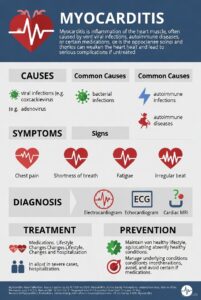- Nursing diagnoses
- Decreased cardiac output related to altered contractility and altered heart rate and rhythm
- Acute pain related to an imbalance between myocardial O2 supply and demand
- Anxiety related to perceived or actual threat of death, pain, and/or possible lifestyle changes
- Activity intolerance related to general weakness secondary to decreased cardiac output and poor lung and tissue perfusion
- Ineffective health management related to lack of knowledge of disease process, risk factor reduction, rehabilitation, home activities, and medications
- Planning
- Overall goals
- Relief of pain
- Preservation of heart muscle
- Immediate and appropriate treatment
- Effective coping with illness-associated anxiety
- Participation in a rehabilitation plan
- Reduction of risk factors
- Overall goals
- Acute interventions: Chronic stable angina
- Upright position
- Supplemental oxygen
- Assess vital signs
- 12-lead ECG
- Administer NTG followed by an opioid analgesic, if needed
- Assess heart and breath sounds
- Acute care: Acute coronary syndrome
- Pain: nitroglycerin, morphine, oxygen
- Continuous monitoring
- ECG
- ST segment
- Heart and breath sounds
- VS, pulse oximetry, I and O
- Rest and comfort
- Balance rest and activity
- Begin cardiac rehabilitation
- Anxiety reduction
- Identify source and alleviate
- Patient teaching important
- Emotional and behavioral reaction
- Maximize patient’s social support systems
- Consider open visitation

How to Have Healthier Holidays in 1-2-3!
For Everyone DECEMBER 1, 2023 How to Have Healthier Holidays in 1-2-3! KEY POINTS Give yourself the gift of better health this holiday season. Try



